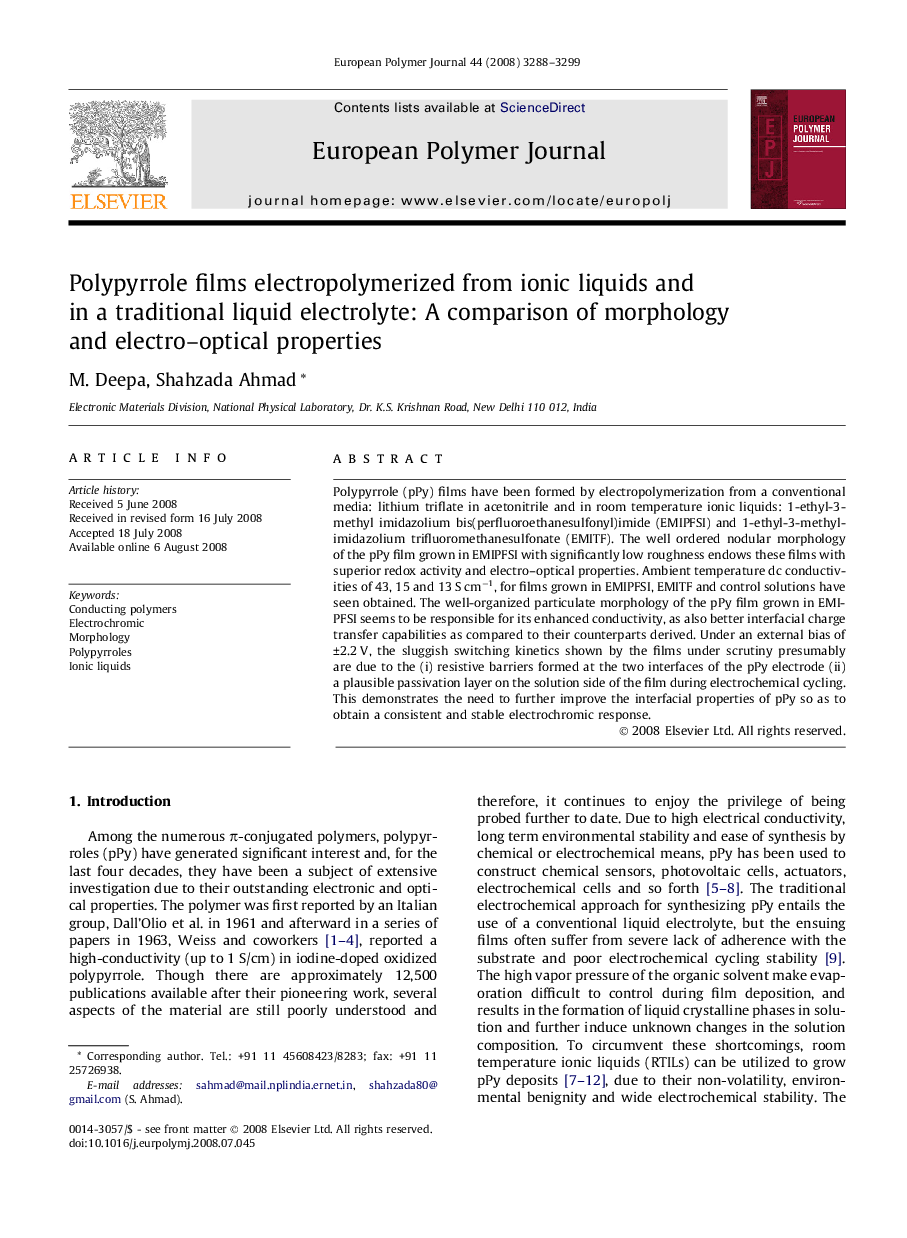| کد مقاله | کد نشریه | سال انتشار | مقاله انگلیسی | نسخه تمام متن |
|---|---|---|---|---|
| 1398489 | 984386 | 2008 | 12 صفحه PDF | دانلود رایگان |

Polypyrrole (pPy) films have been formed by electropolymerization from a conventional media: lithium triflate in acetonitrile and in room temperature ionic liquids: 1-ethyl-3-methyl imidazolium bis(perfluoroethanesulfonyl)imide (EMIPFSI) and 1-ethyl-3-methylimidazolium trifluoromethanesulfonate (EMITF). The well ordered nodular morphology of the pPy film grown in EMIPFSI with significantly low roughness endows these films with superior redox activity and electro–optical properties. Ambient temperature dc conductivities of 43, 15 and 13 S cm−1, for films grown in EMIPFSI, EMITF and control solutions have seen obtained. The well-organized particulate morphology of the pPy film grown in EMIPFSI seems to be responsible for its enhanced conductivity, as also better interfacial charge transfer capabilities as compared to their counterparts derived. Under an external bias of ±2.2 V, the sluggish switching kinetics shown by the films under scrutiny presumably are due to the (i) resistive barriers formed at the two interfaces of the pPy electrode (ii) a plausible passivation layer on the solution side of the film during electrochemical cycling. This demonstrates the need to further improve the interfacial properties of pPy so as to obtain a consistent and stable electrochromic response.
Journal: European Polymer Journal - Volume 44, Issue 10, October 2008, Pages 3288–3299